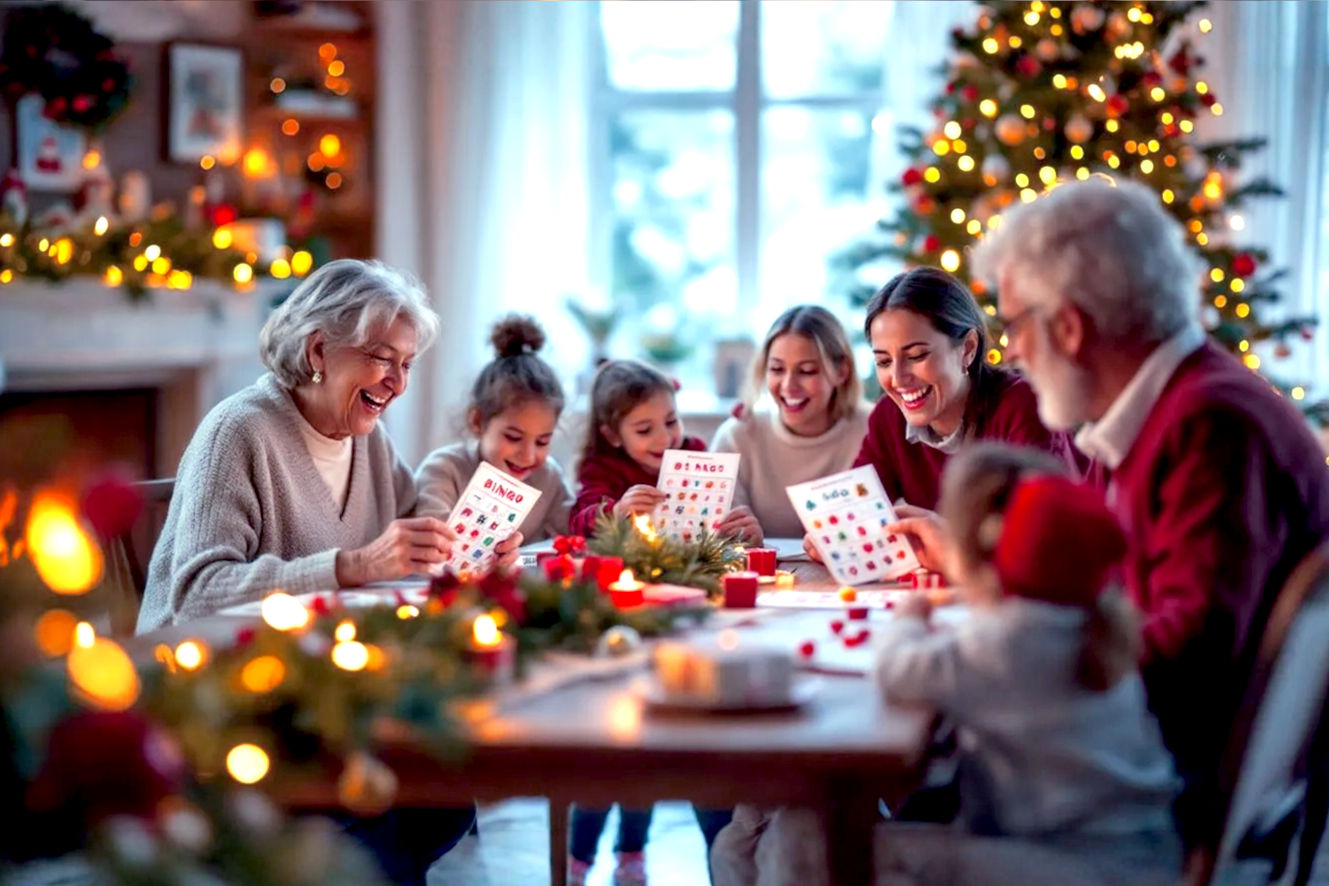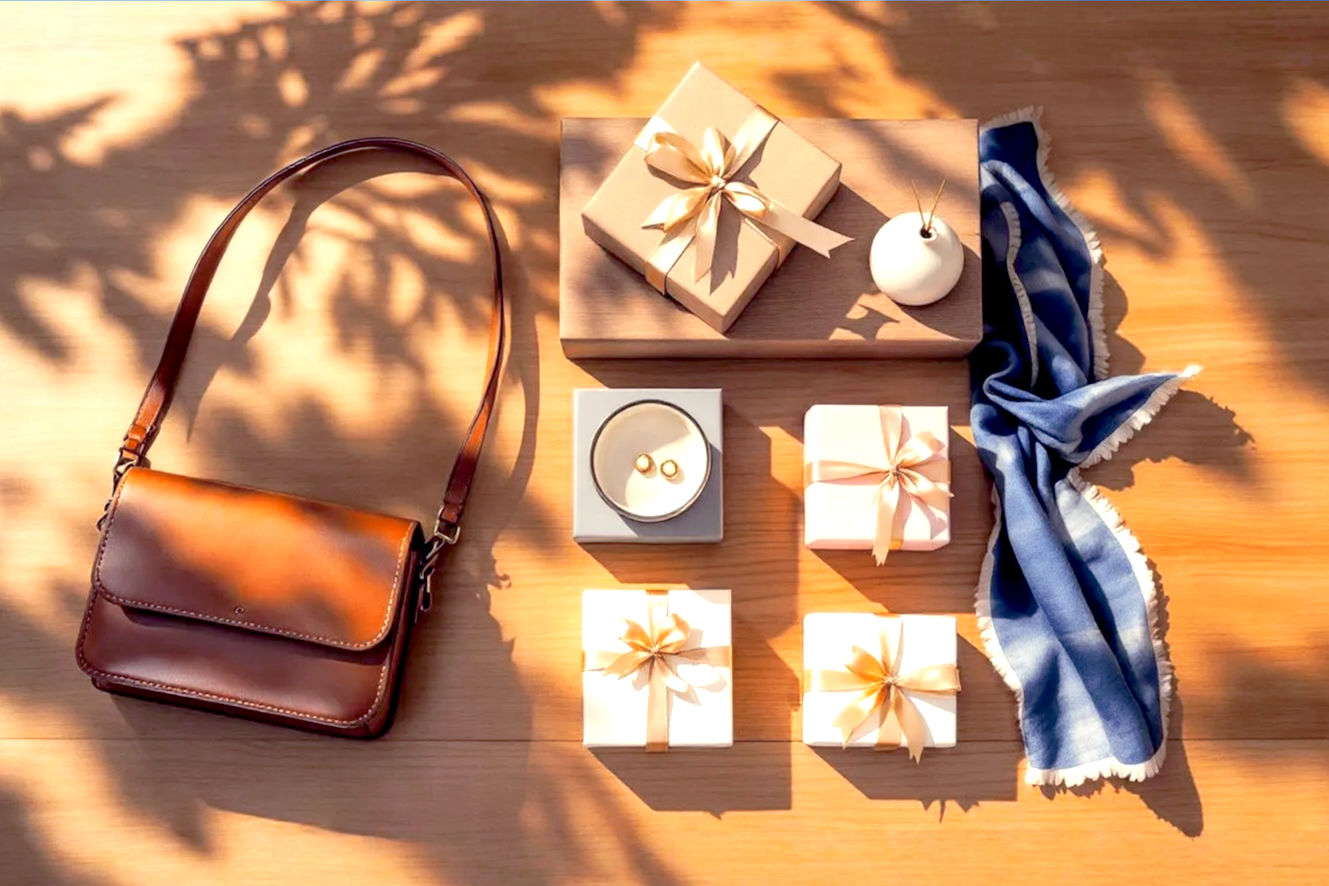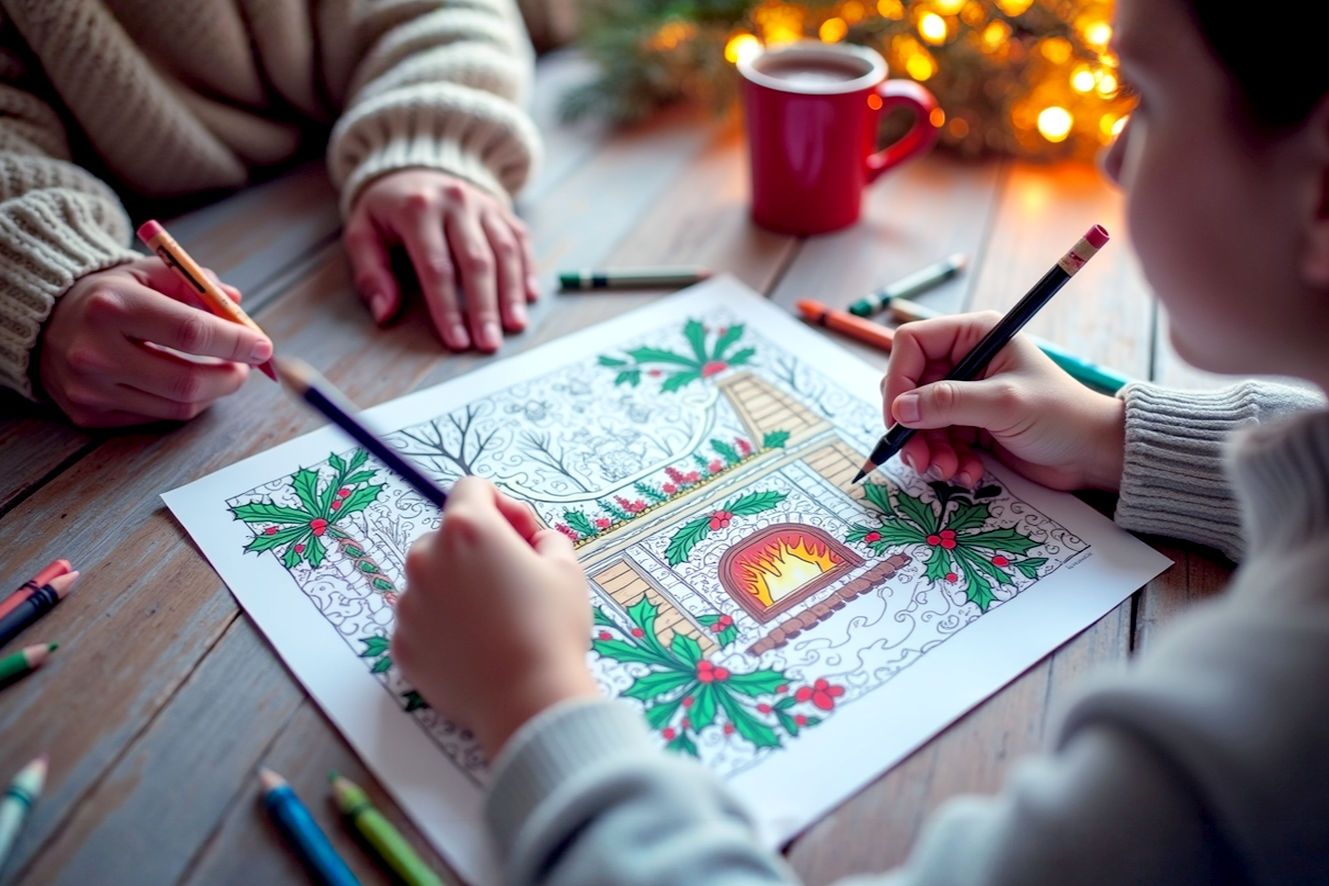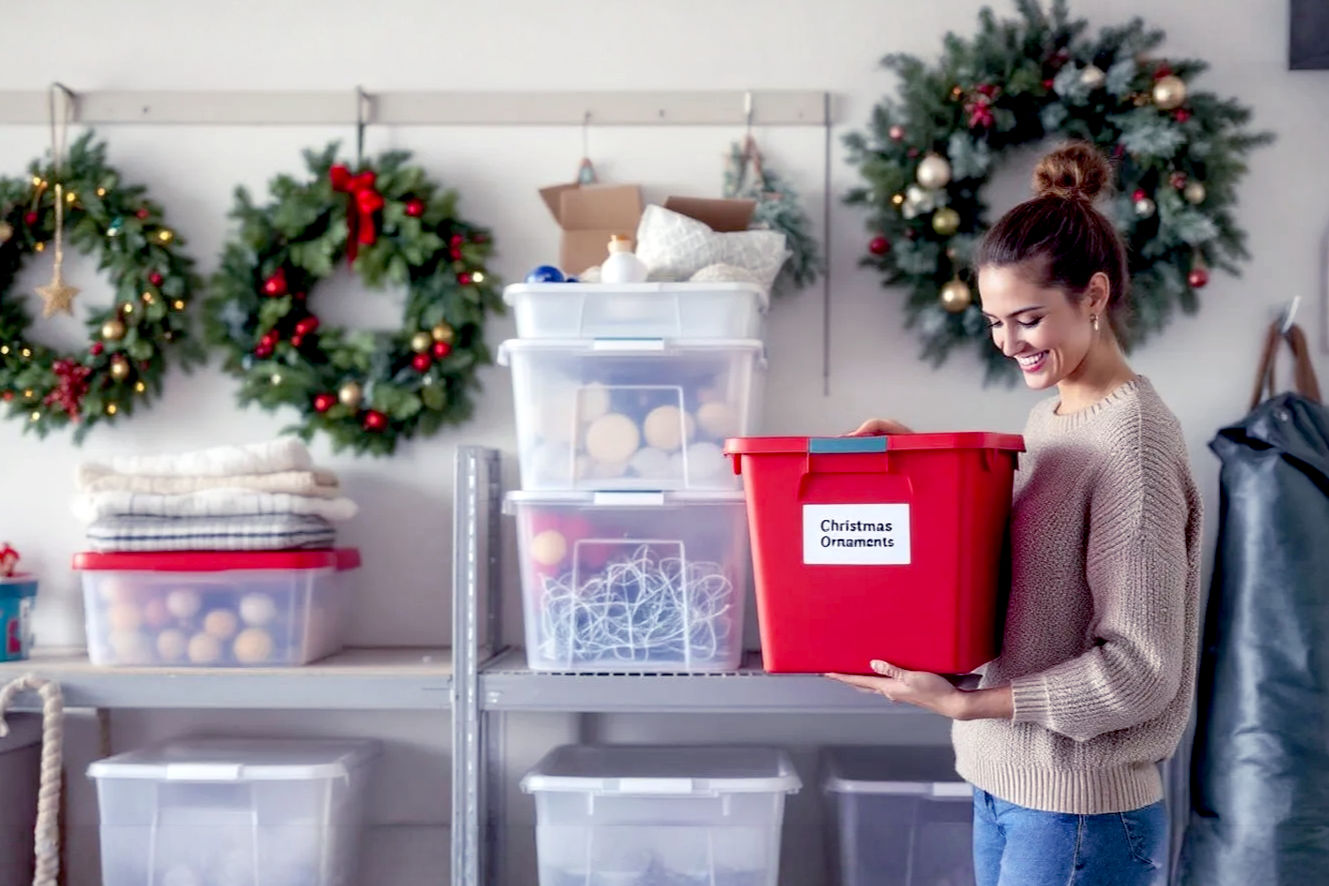This post may contain affiliate links. If you make a purchase through these links, we may earn a commission at no additional cost to you.
Getting ready for Christmas is one of the best parts of the holiday season. The anticipation, the excitement, and the joy of counting down the days can feel magical. Creating a hanging Christmas countdown is a wonderful way to bring that magic to life. A handmade countdown isn’t just a decoration; it’s a new family tradition and a treasured keepsake you’ll use for years to come. You don’t have to be an expert crafter to make something beautiful and personal. This definitive guide will walk you through everything you need to know, from choosing a design to adding the final touches.
The Ultimate DIY Christmas Countdown: Why You Should Make One
Taking on a do-it-yourself (DIY) project allows you to create something perfectly suited to your style and home decor. Instead of buying a mass-produced item, you can craft a countdown that reflects your personality. It also lets you customize the contents, which is a big deal if you want to avoid a calendar full of candy or find special surprises for your kids. This isn’t just a simple craft project; it’s about building a memory.
The Meaning and Magic of an Advent Tradition
The concept of counting down to Christmas dates back to the 19th century. Advent calendars were originally used to mark the days of Advent, a four-week period of preparation leading up to Christmas Day. The word “advent” comes from the Latin word adventus, meaning “coming.” Over time, the tradition evolved from simple chalk marks on a door to the popular cardboard calendars we know today.
A Christmas countdown calendar is a modern take on this tradition. While a traditional advent calendar typically starts on December 1st, a countdown can begin at any time, such as after Thanksgiving. The core idea is the same, though: to build anticipation for the big day. Making your own countdown calendar is a way to reclaim this tradition. You’ll teach your family about the value of creating something by hand and the joy of a shared experience. It’s also an excellent opportunity to be creative and make something truly unique.
Choosing Your Countdown Style: From Pockets to Pegs
Before you buy any materials, you’ll need to decide what kind of countdown you want to make. The two most popular DIY styles are fabric and wood, but there are many other creative options. Each style has its own unique look and feel, and they require different tools and skills.
Fabric Countdown Calendars
A fabric calendar is a classic choice for a handmade holiday decoration. It often features a large fabric panel with 24 or 25 small pockets sewn onto it. This style is fantastic for several reasons. First, it’s very durable and can be washed and stored easily. Second, you have a huge variety of fabrics to choose from, allowing you to match your home’s color scheme or a specific holiday theme. You can use everything from sturdy canvas and burlap to soft felt or quilted cotton. The pockets can hold small toys, treats, or notes. This type of calendar requires basic sewing skills and is a great project for someone with a sewing machine.
Wooden Countdown Calendars
If you prefer a more rustic or permanent feel, a wooden countdown calendar might be for you. These can range from a simple wooden board with numbered hooks to a more complex structure with small wooden boxes or bins. Wood offers a different kind of durability and can be stained or painted to match any decor. The numbers can be painted directly onto the wood, or you can use stencils or vinyl decals for a clean, professional look. A wooden countdown calendar can be a very elegant piece of decor. It’s often a bit more involved than a fabric one, but the result is a beautiful heirloom you can pass down. This project is ideal for those with some woodworking experience or who enjoy working with power tools.
Mixed-Media and Other Creative Approaches
Don’t feel limited to just fabric or wood. You can create a stunning countdown using mixed-media techniques. For example, you could use a large piece of driftwood with twine and small, decorated boxes hanging from it. Or you might use a large embroidery hoop with ribbons and small bags. Other materials like mason jars, small metal buckets, or even paper craft boxes can also be used. The key is to think about what materials you have or enjoy working with and how they can be arranged to create a visually appealing countdown.
Essential Materials and Tools for Your Project
No matter which style you choose, you’ll need a solid list of supplies before you start. Gathering everything in advance will make your project go much more smoothly. We’ll break down the materials and tools by project type to make it easier for you.
Gathering Your Foundation: The Calendar Base
The base of your calendar is the main structure everything else will be attached to. It needs to be durable and large enough to hold all of your countdown elements.
Fabric and Textiles
For a fabric calendar, you’ll need a large piece of fabric for the main backing. Quilting cotton is a great choice because it’s a woven material that’s both durable and easy to work with. It comes in a huge variety of patterns and colors. Another excellent option is canvas or duck cloth, which is a heavier, more rigid material. This is perfect if you want a countdown that hangs flat and holds its shape without extra support. You’ll also need smaller pieces of fabric for the pockets. This can be a contrasting color, or you can use a variety of festive patterns to make each pocket unique. Using a fusible interfacing, a material with an adhesive on one side that you iron onto fabric, can also help your pockets keep their shape.
Wood and Other Sturdy Materials
If you’re building a wooden calendar, your base will likely be a piece of wood. Plywood is a cost-effective and common choice for a large, flat backing. You can get it in various thicknesses. Pine boards are also excellent and can be found at any hardware store. They have a nice grain and are easy to work with. For a more rustic feel, you could even use a piece of reclaimed barn wood or a salvaged wooden pallet. You might also need a dowel rod for the top of a fabric calendar, which is a simple wooden rod used to hang the finished piece.
The Countdown Elements: What Makes It Work
These are the individual components that will hold the daily surprises. You need to decide what kind of “containers” you’ll use for each day.
Pockets, Bins, and Pouches
For a fabric calendar, pockets are the most common choice. You can make simple square or rectangular pockets. A more advanced technique is to make gusseted pockets, which have a folded piece of fabric at the bottom and sides to create more depth. This is a great way to ensure the pockets can hold bigger items. For a wooden calendar, you can use small pre-made wooden boxes or even miniature drawers. If you’re going for a different look, consider using small burlap bags, metal pails, or even paper gift boxes for a more decorative feel.
Hooks, Pegs, and Clips
If you’re not using pockets or boxes, you’ll need a way to hang your items. Small hooks are perfect for a wooden calendar. You can buy them in a variety of finishes, such as brass or silver, to match your style. Wooden pegs are also a great option for a rustic look. For a more modern, minimal design, you could use small bulldog clips or clothespins. These can be used to hold small cards or notes instead of a physical gift.
The Tools of the Trade: A DIYer’s Toolkit
Having the right tools makes any project easier. Here’s a breakdown of what you’ll likely need.
Sewing Essentials
If you’re making a fabric calendar, a sewing machine is a huge time-saver. While you can sew by hand, a machine will give you stronger, more consistent seams. You’ll also need a rotary cutter and a cutting mat for precise, straight cuts on your fabric. Sharp scissors are also essential. Don’t forget the basics: thread, a seam ripper (for mistakes!), and fabric marking pens or chalk. A ruler or measuring tape is a must for making sure your pockets and base are all the right size.
Woodworking and Crafting Tools
For a wooden calendar, you’ll need a saw to cut your wood to the right size. A hand saw is fine, but a miter saw is much faster and more accurate. A drill is essential for making pilot holes and attaching screws or hooks. A sander, either an electric one or a simple sanding block, will help you smooth the edges and prepare the wood for painting or staining. You’ll also need paintbrushes or rollers if you plan to paint, and a power staple gun can be useful for attaching fabric elements to a wooden base.
Adhesives and Fasteners
You’ll need something to hold everything together. Fabric glue is a good no-sew option for attaching pockets, but stitching them is always stronger. For wood, wood glue is a must. You might also need screws, nails, or small eye hooks for hanging your calendar or its daily components.
Step-by-Step Guide to Creating a Fabric Countdown
Ready to get started? Let’s walk through the process of making a classic hanging fabric countdown calendar with pockets. This guide assumes you have a basic understanding of sewing machine operation.
Planning and Designing Your Fabric Calendar
Before you touch any fabric, it’s smart to plan your design. A little bit of planning saves a lot of frustration later on.
Selecting Your Fabric and Layout
First, decide on the size of your calendar. A common size is about 24 inches wide by 36 inches tall, but you can make it any size you like. This size gives you enough room for five columns and five rows of pockets, with a bit of space at the top and bottom. Think about the color scheme. Do you want traditional red and green, or something more modern with neutral tones like gray or white? You’ll also need to decide how big you want your pockets to be. A good size is about 4 inches by 4 inches, which is big enough for most small items.
Creating a Pattern or Template
Once you have your measurements, create a paper or cardboard template for your pockets. This template will ensure all your pockets are the same size. For a 4-inch by 4-inch pocket, you’ll need a piece of fabric that’s about 5 inches by 9 inches. This gives you half an inch for seams on the sides and bottom, and an extra inch at the top to create a folded hem. Do this for all 25 pockets. You should also mark out on your main backing fabric where each pocket will be placed. You can use a fabric marking pen for this. This helps keep everything straight and evenly spaced.
The Sewing Process: From Cut to Construction
Now for the fun part: bringing your design to life with needle and thread.
Cutting Your Fabric Pieces Accurately
Lay your fabric on a flat surface. Using your rotary cutter and cutting mat, carefully cut the main backing piece to your desired size. Next, cut out all of your pocket pieces using your pocket template. Take your time here. Precise cuts make for a much neater finished product. It’s a good idea to cut a few extra pieces in case you make a mistake.
Sewing Pockets and Attaching Them to the Base
The most critical part of this process is sewing the pockets. First, take one pocket piece. Fold the top edge down by about half an inch and press it with an iron to create a hem. Sew a straight stitch along this hem. This gives the top of the pocket a clean, finished edge. Next, fold the entire pocket piece in half, wrong sides together, so the hemmed edge is at the top. You now have a pocket blank that’s about 4.5 inches wide by 4 inches tall.
Now, pin the pocket onto your main backing fabric, using the marks you made earlier as a guide. Sew a seam along the two sides and the bottom of the pocket, leaving the top open. Be sure to backstitch at the beginning and end of each seam to lock the stitches in place. This will prevent the seams from coming undone. Repeat this process for all 25 pockets.
Finishing and Hemming the Edges
After all the pockets are attached, you need to finish the edges of the main backing fabric. This prevents fraying. The simplest way to do this is to fold each edge over twice and sew a hem. This gives it a clean, finished look. If you want a more decorative finish, you could use a zigzag stitch on the raw edges or even add a decorative trim like pom-pom fringe or ribbon.
Final Touches and Hanging Mechanisms
The last step is to add the decorative elements and get your calendar ready to hang.
Adding Decorative Elements and Numbers
Now is the time to add the numbers. There are several ways to do this. You can use iron-on numbers that you can buy at any craft store. You can also use a stencil and fabric paint. For a more personal touch, you can embroider the numbers by hand. Another option is to use a Cricut or similar cutting machine to create numbers from heat transfer vinyl. Once the numbers are on, you can add any other decorations you like, such as buttons, ribbons, or small embroidered designs.
Attaching a Dowel Rod or Frame for Hanging
For a professional-looking finish, you’ll want to add a rod or frame for hanging. The easiest way is to create a sleeve or casing at the top of the fabric. To do this, simply fold the top edge of your fabric over, creating a channel wide enough for your dowel rod to slide through. Sew this channel closed, and then you can slide your dowel rod in. You can tie a piece of twine or ribbon to each end of the dowel to hang it from a hook on the wall. For a wooden frame, you can sew the top edge of your fabric directly onto the top piece of wood using a staple gun.
Building a Unique Wooden Christmas Countdown
If you’re more comfortable with wood, this section is for you. A wooden countdown can be a true centerpiece of your holiday decor.
Designing and Preparing Your Wooden Base
Just like with the fabric calendar, planning is key. Think about the size and shape you want.
Choosing the Right Wood and Dimensions
For a wooden calendar, a nice piece of pine or oak board makes a great base. You can get a piece that’s already the size you want, or you can cut it down to size. You can also use a square of plywood for a more modern look. Think about the depth you need for your pockets or boxes. If you’re attaching small wooden boxes, you’ll need a base that’s wide enough to support them all.
Sanding, Staining, or Painting the Wood
This step is crucial for a professional finish. Start by sanding the entire piece of wood to make it smooth. This removes any rough edges and prepares the surface for a finish. Start with a coarser grit sandpaper (around 80-120 grit) and then move to a finer grit (220 grit) for a super smooth finish. Once it’s sanded, you can either stain it for a natural, rustic look or paint it. Be sure to apply a sealant or varnish after painting to protect the surface from wear and tear.
Assembling the Countdown Structure
Now it’s time to put all the pieces together.
Attaching Pockets or Boxes to the Base
If you’re using small wooden boxes or bins for your countdown, you’ll need to attach them securely to the wooden base. The best way to do this is with wood glue and small brad nails. Apply a small amount of wood glue to the back of the box, position it on the base, and then use a brad nailer to secure it in place. This provides a strong, permanent bond. You can use clamps to hold the boxes in place while the glue dries.
Drilling Holes and Inserting Hooks or Pegs
If you’re using a more minimalist design with hooks or pegs, you’ll need to mark and drill holes. Use a ruler to ensure the holes are evenly spaced. Use a drill bit that is slightly smaller than the threads on your hooks. This is called a pilot hole, and it prevents the wood from splitting when you screw in the hook. If you’re using wooden pegs, a slightly larger hole might be needed. Once the holes are drilled, you can simply screw in the hooks or tap in the pegs with a mallet.
Personalizing Your Wooden Calendar
Now for the details that will make your calendar stand out.
Applying Vinyl Decals or Hand-Painting Numbers
The numbers are what make it a countdown! Vinyl decals are an easy and clean way to add numbers. You can buy pre-cut vinyl numbers or make your own with a cutting machine. For a handmade feel, you can hand-paint the numbers with a small brush and acrylic paint. Another option is to use a stencil. To ensure the numbers are durable, you can apply a clear coat of varnish over them after the paint has dried.
Adding Lights, Garlands, or Other Decorations
Don’t be afraid to accessorize! Battery-operated fairy lights can be a beautiful addition, giving your countdown a warm, magical glow. You can also drape a small garland of faux pine or berries around the frame. You can add a decorative sign at the top that says “Countdown to Christmas” or another festive message. These small details can take your calendar from a simple craft to a true work of art.
Creative Countdown Fillers: Ideas for Every Age
A countdown calendar is only as good as the surprises inside! The best part of making your own is that you can choose the fillers to fit your family’s interests and values. You don’t have to spend a lot of money to make it special.
Classic and Modern Advent Calendar Surprises
These are the tried-and-true fillers that everyone loves. They are small and easy to tuck into a pocket or box.
Small Toys and Trinkets
For children, this is a surefire hit. Think about small toy cars, Lego mini-figures, temporary tattoos, or small plastic animals. You can also include craft supplies like colorful beads, stickers, or small bottles of glitter. Small hair clips, bracelets, or other accessories are also great ideas. The possibilities are endless, and you can tailor them to what your child loves.
Sweet Treats and Edible Goodies
You can’t go wrong with sweets! Small candies, mini candy canes, or individually wrapped chocolates are perfect. For a fun, homemade touch, you could make a batch of cookies and put a single cookie in each day’s pocket. It’s a great way to spread out the holiday baking.
Experience-Based Countdown Ideas
These are fillers that focus on activities and family time rather than physical items. They are a wonderful way to build memories.
Activity Cards and Family Adventures
Instead of a physical gift, you can put a small card in each pocket with a holiday-themed activity. This could be something as simple as “drink hot cocoa” or “watch a Christmas movie.” Other ideas include “drive around to see the Christmas lights,” “bake cookies,” or “make a gingerbread house.” This is an excellent way to connect with your family and make the holiday season about shared experiences.
Acts of Kindness and Charitable Giving
You can use your countdown to teach your family the importance of giving back. Each day can have a card with a small act of kindness on it. This could be “write a thank you note to your mail carrier,” “make a card for a grandparent,” or “donate a toy to a charity.” This type of countdown teaches empathy and generosity and is a beautiful way to spread holiday cheer beyond your own home.
Final Assembly and Display
You’ve put in the hard work, and your countdown is finished! Now it’s time to hang it up and enjoy it.
How to Hang Your Christmas Countdown Calendar
The way you hang your calendar will depend on its weight and the type of wall you have.
Using Command Hooks and Adhesive Strips
For a fabric calendar with a dowel rod, Command hooks are a fantastic option. They are strong enough to hold the calendar’s weight, and they can be removed easily after the holidays without damaging your paint. This is a great choice for renters or anyone who doesn’t want to put holes in their walls. For a wooden calendar, you can use a few smaller adhesive strips on the back of the wood, but make sure to check the weight limits to ensure they can hold the calendar securely.
Securing with Nails or Screws for a Sturdy Mount
If your wooden calendar is heavy or you plan to use it year after year in the same spot, using screws or nails is the best choice for a sturdy, permanent mount. Use drywall anchors if you’re not drilling into a stud. This will ensure the calendar is firmly attached to the wall and won’t fall down.
Maintaining and Storing Your Handmade Creation
Proper care will ensure your calendar lasts for many seasons to come.
How to Clean and Care for Your Calendar
If your calendar is made of fabric, you’ll want to spot-clean any dirt or spills with a damp cloth and mild soap. If it gets very dirty, you can machine-wash it on a delicate cycle, but you should use cold water and a mild detergent. Let it air dry completely. For wooden calendars, simply dust them with a soft cloth. Avoid using harsh chemical cleaners, which can damage the paint or stain.
Packaging and Storing it for Next Year
Once the holiday season is over, you’ll need to store your calendar. For fabric calendars, you can fold it neatly and store it in a plastic bin or a large Ziploc bag to protect it from dust and moisture. For wooden calendars, wrap it in tissue paper or a soft towel and place it in a sturdy box. Be sure to store it somewhere dry, like a closet or attic, so it’s ready for next year’s holiday season.
Frequently Asked Questions About DIY Advent Calendars
People have a lot of questions when they’re new to this kind of project. Here are the answers to some of the most common ones.
Answering Your Common Countdown Queries
We’ve put together some quick answers to common questions to help you get started with your project.
What’s the Best Fabric for a Christmas Countdown?
The best fabric depends on your needs. Canvas or duck cloth is ideal if you want a stiff, flat calendar that hangs well and holds its shape. For a softer, more traditional look, quilting cotton is a great choice. Felt is another option, especially for a no-sew calendar, but it can be less durable over time.
How Can I Make a Countdown Calendar without Sewing?
It’s absolutely possible to make a no-sew calendar! You can use fabric glue or a hot glue gun to attach the pockets. Using felt is a great choice here because it doesn’t fray when cut. For a wooden calendar, you can use a hot glue gun or wood glue to attach the boxes or hooks.
How Do I Make Sure the Pockets Hold Their Shape?
If you’re using a lighter fabric like quilting cotton, you can use a material called fusible interfacing. It’s an adhesive fabric you can iron onto the back of your pocket pieces before you sew them. This gives the fabric more stiffness and body, helping the pockets to stay open and hold their shape.
What’s the difference between a Countdown and an Advent Calendar?
The terms are often used interchangeably, but there’s a slight technical difference. An Advent calendar traditionally begins on the first Sunday of Advent and lasts until Christmas Eve. A Christmas countdown simply counts the days until Christmas Day, usually starting on December 1st. In practice, a DIY calendar can be either!
Conclusion: Your Countdown is More Than Just a Calendar
Making your own hanging Christmas countdown is a rewarding project. It allows you to create a beautiful, personalized decoration that perfectly suits your style. More than that, it’s a way to step back from the commercial side of the holidays and focus on creating something with your hands. Whether you choose fabric, wood, or another creative medium, you’re not just building a calendar—you’re building a new family tradition that will bring joy for years to come.






